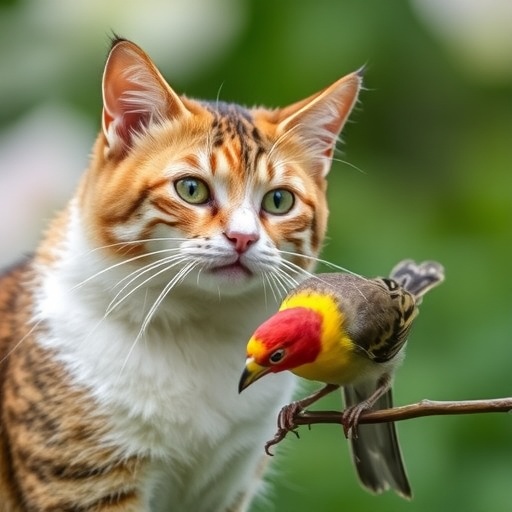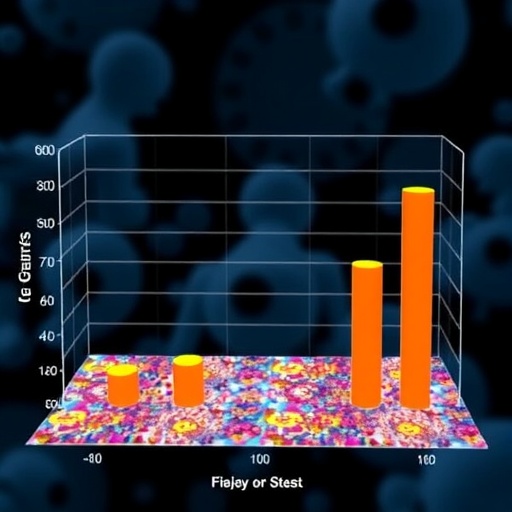In recent years, the ecological interface between wildlife and domestic animals has increasingly become a focal point of infectious disease research. Among the most alarming developments is the transmission of highly pathogenic avian influenza H5N1, commonly known as bird flu, to domestic house cats. A groundbreaking study led by the University of Maryland has shed new light on the clinical management and outcomes of H5N1 infections in felines, offering a beacon of hope in a situation that has often been matter-of-factly approached with euthanasia as the inevitable solution.
Historically, bird flu has demonstrated a pronounced virulence in avian species, but its spillover into mammals, particularly domestic cats, has raised significant concerns among veterinarians and infectious disease experts. Cats, once infected, often display a fulminating disease course resulting in high mortality. An incident that catalyzed new investigational efforts involved four cats in a Tulare County household, situated within the epicenter of California’s contemporary avian influenza outbreaks. This household experience became a pivotal case series for studying therapeutic interventions.
The study detailed in the peer-reviewed journal One Health meticulously documents the clinical progression and treatment outcomes of these felines following H5N1 infection. Among the four infected cats, two succumbed rapidly despite supportive care including antibiotics and fluid therapy, underscoring the aggressive nature of the infection when intervention is delayed or suboptimal. However, the two remaining cats survived after receiving an early course of antiviral therapy, specifically oseltamivir, well-known for its efficacy against human influenza viruses. This successful treatment underlines the therapeutic potential of antivirals in veterinary infectious disease management.
Oseltamivir, a neuraminidase inhibitor, acts by impeding viral replication, thereby reducing viral load and associated tissue damage. Its mechanism targets the influenza virus’s surface enzyme neuraminidase, halting the release of progeny virions from infected host cells and limiting viral spread. The administration of oseltamivir shortly after symptom onset in the surviving cats facilitated viral clearance, preventing the extensive cellular destruction observed in untreated cases. The timing of antiviral administration emerged as the critical determinant of survival, highlighting the necessity for rapid diagnosis and treatment in infected pets.
Neurological manifestations, such as tremors and impaired locomotion, coupled with respiratory distress and mucopurulent nasal and ocular discharge, characterized the clinical picture of infected cats. These symptoms reflect systemic viral invasion beyond the pulmonary system, possibly due to viral neurotropism seen in highly pathogenic avian influenza strains. The early appearance of such neurological signs should alert veterinarians to the potential need for antiviral intervention rather than solely symptomatic or antibiotic therapy, which showed limited efficacy in this context.
The transmission dynamics of H5N1 in feline populations remain incompletely understood but are hypothesized to involve ingestion of infected prey or contaminated food sources, as well as possible aerosol or fomite transfer. The Tulare County cases, while epidemiologically linked, could not definitively identify the index exposure event, complicating efforts to control intra-household spread. The high mortality observed in untreated cats stokes fears of domestic felines becoming reservoirs or vectors for zoonotic transmission, albeit spillover to humans remains rare.
Veterinarians and pet owners face multifaceted challenges in managing these cases. Rapid identification of clinical signs and prompt initiation of antiviral therapy can drastically alter disease trajectories. Dr. Kristen K. Coleman, the study’s principal investigator, emphasizes that euthanasia need not be the foregone conclusion in every case. Instead, with adequate veterinary support and early antiviral administration, cats can not only survive but recover full health and develop durable immunity that reduces reinfection risk for several months post-recovery.
This new evidence demands a recalibration of veterinary protocols for respiratory and neurological illnesses in cats during avian influenza outbreaks. It also highlights the critical role of One Health approaches that integrate veterinary and human health disciplines to monitor, treat, and contain zoonotic pathogens. Rapid communication between veterinarians and public health officials can curtail potential zoonotic spillover events, enhancing biosecurity measures in both clinical and domestic environments.
Given the highly pathogenic nature of the H5N1 strain among cats, the study advocates enhanced surveillance and diagnostic vigilance during peak avian influenza seasons. It proposes that veterinary clinics maintain readiness to implement antiviral treatment upon clinical suspicion of avian influenza, even prior to confirmatory laboratory diagnosis. This empirical approach could mitigate fatalities and curtail viral transmission chains within domestic animal populations.
The significance of this study extends beyond feline health, offering critical insights into viral mutation, host range expansion, and cross-species infection dynamics. As H5N1 and other avian influenza virions continue to evolve, understanding their interaction with mammalian hosts informs both veterinary treatment algorithms and broader pandemic preparedness efforts. Cats, as close human companions, occupy a unique epidemiological niche that must be considered in the One Health context.
In conclusion, the University of Maryland-led research signals a paradigm shift in responding to avian influenza infections in domestic cats. Early detection and oseltamivir treatment constitute an effective therapeutic strategy, challenging prior assumptions about prognosis and management. These findings carry urgent implications for veterinary care standards and zoonotic disease control policies, underscoring the imperatives of timely intervention and interdisciplinary collaboration in combating emerging viral threats.
Subject of Research: Animals
Article Title: Outbreak of highly pathogenic avian influenza a(H5N1) among house cats: A case series involving oseltamivir treatment
News Publication Date: 18-Sep-2025
Web References:
https://www.sciencedirect.com/science/article/pii/S2352771425002472?via%3Dihub
http://dx.doi.org/10.1016/j.onehlt.2025.101211
References: One Health, Volume and Issue TBD, 2025
Image Credits: UMD
Keywords: Infectious disease transmission, Respiratory disorders
Tags: avian influenza spillover to mammalsecological interface of wildlife and domestic animalsH5N1 infection in felineshigh mortality in infected house catshouse cat bird flu outbreakinfectious diseases in domestic catsresearch on feline infectious diseasessurvival strategies for infected catstherapeutic interventions for H5N1transmission of avian influenza to domestic animalsTulare County bird flu incidentveterinary clinical management of bird flu





